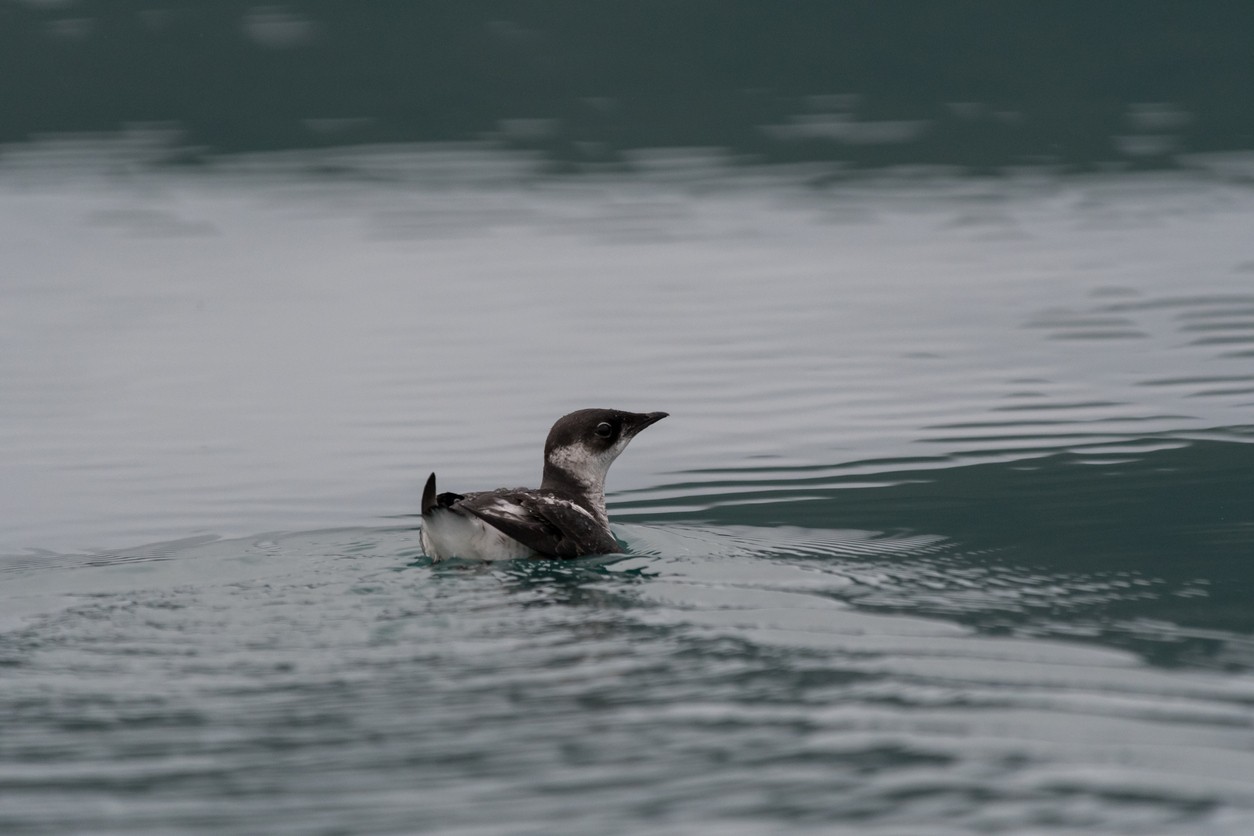Marbled Murrelet
A species of Forest and Glacier Murrelets Scientific name : Brachyramphus marmoratus Genus : Forest and Glacier Murrelets
Marbled Murrelet, A species of Forest and Glacier Murrelets
Botanical name: Brachyramphus marmoratus
Genus: Forest and Glacier Murrelets
Content
Description General Info

Description
The marbled murrelet is a small (25 cm), chunky auk with a slender black bill. It has pointed wings and plumage that varies by season. The non-breeding plumage is typically white underneath with a black crown, nape, wings and back. The bird closely resembles its closest relative, the Long-billed murrelet; in fact, these species were considered conspecific up until 1998. In breeding plumage, both have a brown mottled body and face. The Long-billed has a pale white throat, lacking in the Marbled. In winter plumage, the Marbled murrelet has a white neck collar, absent in Long-billed. The Marbled murrelet is shorter-billed and slightly smaller than the Long-billed murrelet. 
Size
25 cm (10 in)
Life Expectancy
7-10 years
Nest Placement
Tree
Feeding Habits
Marbled Murrelet primarily consume small fish and zooplankton. They hunt by 'flying' underwater, often near land, in dives under a minute and at shallow depths. They forage solo, in groups, or mixed-species flocks, sometimes cooperatively herding prey. Prey includes fish like sandlance, anchovy, herring, and salmon, along with shrimp and squid.
Habitat
Marbled Murrelet resides in coastal old-growth conifer forests, with a preference for nesting in trees like Douglas-fir, Alaska yellow cedar, and Sitka spruce. These areas are characterized by high moisture, frequent fog, and considerable winter rainfall, with mossy limbs serving as natural nesting platforms.
Nest Behavior
Marbled Murrelet lays a single egg either in tree branches or on rocky ground. Egg-laying occurs in secure sites to prevent rolling, with no additional nesting material. Parental care involves both parents incubating the egg and feeding the chick.
Nest Characteristics
Marbled Murrelet's nest is often on moss-covered branches over 40 feet high in old forests, without actual construction. Alternatively, marbled Murrelet may use ground depressions in rocky or vegetated areas, averaging 4.2 inches long and 3.7 inches wide.
Dite type
Piscivorous
General Info
Feeding Habits
Bird food type
Behavior
Marbled Murrelet exhibits a unique blend of marine and arboreal lifestyles. Daily, they engage in foraging at sea, often diving to capture small fish and invertebrates. Their interaction with the environment is multifaceted, as they spend considerable time on the open ocean, yet require old-growth trees for nesting. Remarkably, their courtship takes place on water, where they perform synchronized displays, such as V-shaped wing raising, neck extending, bill pointing, and whiny calls. These displays cement long-term pair bonds, potentially lasting year-round. They are also known for their dynamic chasing behaviors in air and sea, highlighting their agility and dedication to partner interaction.
Distribution Area
Marbled murrelets occur in summer from Alaska's Kenai Peninsula, Barren islands, and Aleutian Islands south along the coast of North America to Point Sal, Santa Barbara County, in south-central California. Marbled murrelets winter mostly within the same general area, except that they tend to vacate the most northern sections of their range, especially where ice forms on the surface of the fiords. They have been recorded as far south as Imperial Beach of San Diego County, California. 
Species Status
ENDANGERED. Previously considered Near Threatened. Population has apparently undergone a very rapid reduction.

